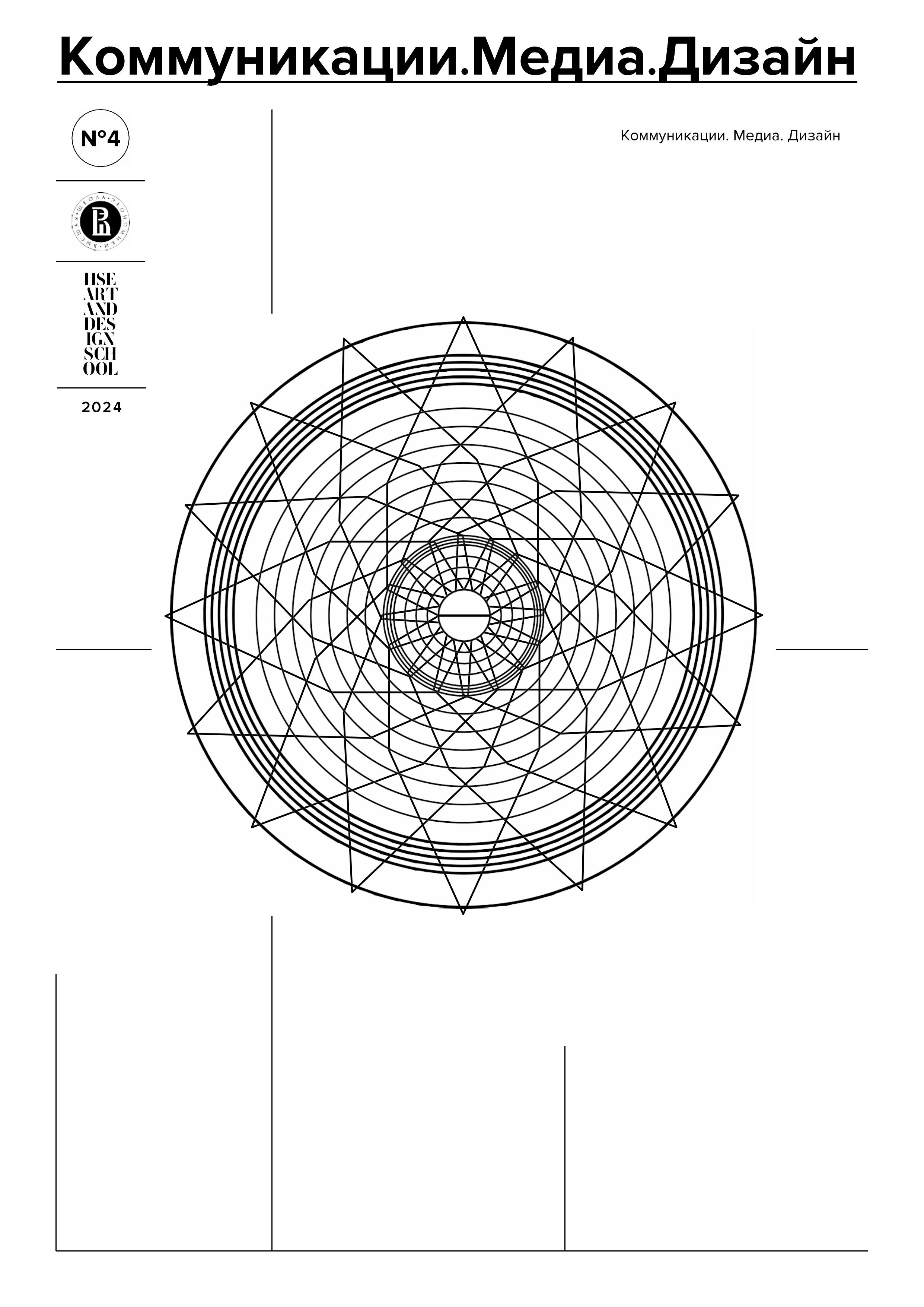Феномен синхронизации в контексте исследований современного искусства
Аннотация
Статья продолжает серию материалов в рамках исследования концепции Brainmedia и медиального присутствия мозга в современном искусстве. На примере феномена синхронизации, лежащего в основе социального познания и взаимодействия, авторы прослеживают поступательный процесс интеграции научных понятий и концептов нейронаук в сферу искусства и их переосмысления художественными методами. Авторами проведен сравнительный анализ исследуемого феномена в культурно-историческом контексте, разработана классификация художественных стратегий его концептуализации, выявлены ключевые этапы: от интуитивного понимания и выражения при помощи классических художественных приемов, — до его целенаправленного использования в качестве инструмента вовлечения зрителя в пространство художественного исследования или ключевого концептуального основания для формирования актуального художественного высказывания. Благодаря проведенному анализу были выявлены и проанализированы некоторые подходы, инструменты, а также импликации, которые применяют в своей работе художники направления Brain art, использующие в качестве новых визуальных средств нейротехнологии. В статье представлено авторское определение данного направления, предпринята попытка выявить его отличительные черты, определить место в пространстве современного искусства в контексте уже существующих академических подходов. Предложенная авторами классификация, безусловно, не охватывают всего многообразия возможных художественных стратегий, однако наглядно отражает устойчивую тенденцию к расширению «технологической базы» искусства за счет интеграции современных технологий в качестве новых выразительных средств, а материала научных открытий — как инструмента расширения пространства смыслов и интерпретации, которые художник предлагает зрителю в том числе для выработки более осознанного, критического отношения к рассматриваемым феноменам, а также с целью соучастия. Для решения задач исследования задан максимально широкий контекстуальный фрейм, или рамка исследуемого феномена: от нейробиологического до социокультурного и метауровня (природа — человек — человеческое сообщество — вселенная — метавселенная); от общих положений (введения в проблематику и контекстуализации исследования в широком социокультурном пространстве) авторы переходят к конкретизации своих выводов на примере отдельных произведений искусства с учетом их медиальной специфики.
Скачивания
Литература
Буррио, Н. (2016). Реляционная эстетика. Постпродукция. Ад Маргинем Пресс.
Виппер, Б. Р. (1985). Введение в историческое изучение искусства. Изобразительное искусство. https://rusneb.ru/catalog/000199_000009_001299455/
Галкин, Д. В. (2005). Техно-логика новых медиа: к проблеме генезиса цифровой культуры. Гуманитарная информатика, (5), 37–60. EDN: PBHISZ
Дейнека, А. А. (1974). Жизнь, искусство, время. Художник РСФСР.
Левченко, О. Е. (2014). Science-art: проблемы терминологии. Вестник РГГУ. Серия: Философия. Социология. Искусствоведение, 136(14), 155–162. EDN: UHISVF
Левченко, О. Е. (2016). Освоение природы средствами сайнс-арта: “естественное” и “технологическое” [Диссертация на соискание ученой степени кандидата культурологии, Российский государственный гуманитарный университет].
EDN GSKHKJ
Лосев, А.Ф. (1975). История античной эстетики. Аристотель и поздняя классика. Искусство.
Луначарский, А. В. (1908). Социализм и искусство. «Театр». Книга о новом театре: Сборник статей (сс. 7–40). Шиповник.
Маквей, А. В. (2024). Концепция Brainmedia: мозг как медиа и искусство. Коммуникации. Медиа. Дизайн, 9(2), 88–108. https://cmd-journal.hse.ru/article/view/21873
Очеретяный, К. А. (2015). Тело как медиа: опыт реконструкции [Диссертация на соискание ученой степени кандидата философских наук, Санкт-Петербургский Государственный Университет]. DisserCat. https://www.dissercat.com/content/telo-kak-media-opyt-rekonstruktsii
Погудина, В. В. (2021). Повседневное взаимодействие как коллективное исполнение: к теории имплицитной синхронизации. Социология власти, 33(4), 97–118. https://doi.org/10.22394/2074-0492-2021-4-97-118
Рычкова, О. В. (2010). "Социальный мозг" – новый объяснительный конструкт в психологии? Научные ведомости Белгородского государственного университета. Серия: Гуманитарные науки, 95(24), 335–344. https://clck.ru/3FaL48
Фридберг, Д., Галлезе, В. (2023). Движение, эмоция и эмпатия в эстетическом переживании. В Н. Мазур (ред.), Мир образов. Образы мира. Антология исследований визуальной культуры (сс. 476–488). Издательство Европейского университета в Санкт-Петербурге.
Шмырина, Т. А. (2011). Футурология как наука и как предсказание (социально-философский аспект). Вестник Тамбовского университета. Серия: Гуманитарные науки, 101(9), 259–263. EDN: OGAHZR
Югай, И. И. (2018). Медиа искусство: истоки, специфика, художественные стратегии. [Диссертация на соискание ученой степени доктора искусствоведения, Российский институт истории искусств]. https://www.dissercat.com/content/media-iskusstvo-istoki-spetsifika-khudozhestvennye-strategii?ysclid=m59lkiuv5y339813268
Lysen, F. (2020). Kissing and staring in times of neuro-mania: The social brain in art-science experiments. In H. Borgdorff, P. Peters and T. Pinch (eds.). Dialogues Between Artistic Research and Science and Technology Studies (p. 170). Routledge.
Lysen, F. (2022). Brainmedia: one hundred years of performing live brains, 1920–2020. Amsterdam School for Cultural Analysis. https://doi.org/10.5040/9781501378713
McCabe, D. P., Castel, A. D. (2008). Seeing is believing: The effect of brain images on judgments of scientific reasoning. cognition, 107(1), 343–352. https://doi.org/10.1016/j.cognition.2007.07.017
Mondloch, K. (2016). Wave of the future? Reconsidering the neuroscientific turn in art history. Leonardo, 49(1), 25–31. https://doi.org/10.1162/LEON_a_00809
Zeki, S. (1999). Inner vision: An exploration of art and the brain. Oxford University Press.

